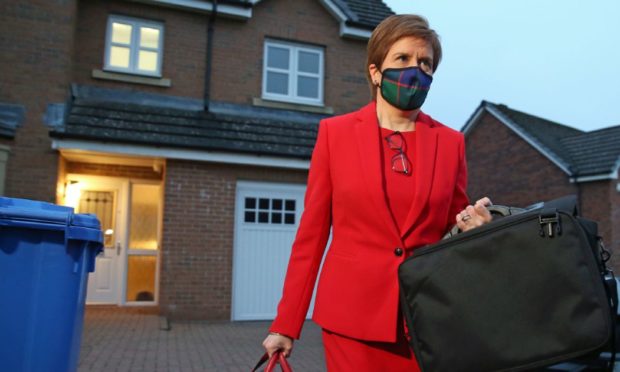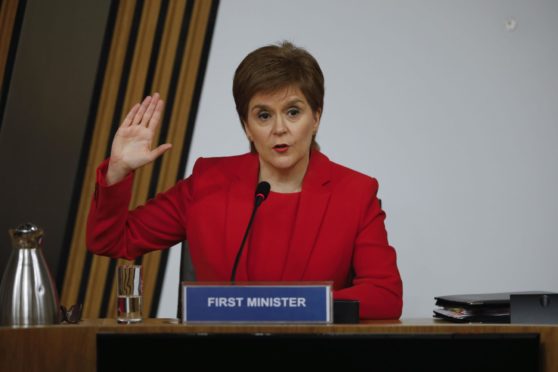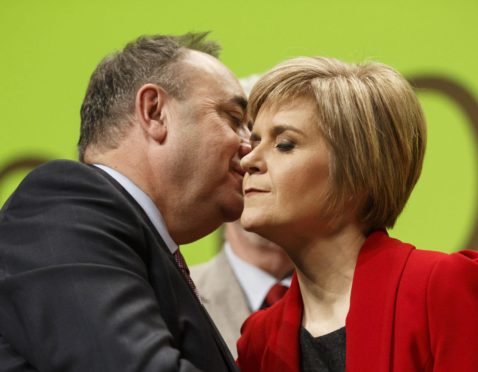In the end, it was the Tony Blair defence that First Minister Nicola Sturgeon adopted when appearing at the hearing of the Scottish Parliament Committee on the Scottish Government Handling of Harassment Complaints.
During a row about a £1m donation influencing the policy of his government on tobacco advertising, Blair famously said ‘I think most people who have dealt with me, think I’m a pretty straight sort of guy, and I am’.
Similarly, during her marathon seven-hour evidence session, Nicola Sturgeon repeatedly pressed on the committee how she had “never wanted this to happen”. By which she was answering the accusation that there was a conspiracy against Alex Salmond – which is not actually a charge being made, let alone investigated, by the committee. Nor one that Mr Salmond himself is levelling. But it provided Ms Sturgeon with the bridge to her expressing her personal sense of shock, and at times outrage at the behaviour of a man she said ‘I have revered’, quickly corrected to ‘had revered’.
This was a polished performance by Ms Sturgeon – only politicians at the top of their game can be as fresh and controlled at the end of such a lengthy grilling as they were at the beginning – and her team have already briefed that there was no ‘smoking gun’.
There is going to be no Rebus-style revelation of means, motive and opportunity”
Yet, this is an inquiry into a series of botched processes by the Scottish Government. A complaints process which dismally failed civil service complainants. The collapse of the government’s failed defence of that flawed process that cost the taxpayer more than half a million pounds. And an excoriating judgment which found the process ‘tainted with apparent bias’.
There is going to be no Rebus-style revelation of means, motive and opportunity, just the painstaking piecing together of an evidence trail. Evidence, which committee members annoyingly reminded the First Minister, had at times only been dragged from an extremely reluctant Scottish Government by parliamentary motions, a threat of a Vote of No Confidence, and statutory powers under the Scotland Act. And it still hasn’t been made fully available to the committee.
Jackie Baillie pins Nicola Sturgeon to the facts
At the heart of all inquiries is the question – who knew what, and when? And the Grand Inquisitor who would not let this go was Labour’s Deputy Leader Jackie Baillie. Repeatedly Ms Sturgeon told the committee of her sense of betrayal at Alex Salmond’s alleged actions, and her solidarity with the woman complainants. Just as repeatedly, Jackie Baillie spurned the opportunity to offer the solidarity of the sisterhood and returned the First Minister to the facts, and in particular two critical meetings on 29 March, and 2 April 2018.
These are the meetings at the heart of the question of whether Ms Sturgeon misled parliament. Some of the accounts of what the meetings were – and why they weren’t recorded as required by the Ministerial Code – have generated amusement. At one point, Ms Sturgeon explained that the latter meeting was a party meeting, while her husband Peter Murrell patiently explained that he didn’t attend the meeting – held in their house – because although he was SNP Chief Executive he assumed that it was a government meeting. As the intro to the sitcom ‘Soap’ used to say, ‘Confused? You will be!’
The verbal gymnastics did not impress Jackie Baillie who pounced, Columbo-like”
Ms Sturgeon had finally settled on an explanation for the confused description of the meeting – it had started as a party meeting, but as it progressed it became a government meeting. Yet one that she declined to report to the Permanent Secretary as the Ministerial Code required because, as First Minister, she feared that even acknowledging the existence of the meeting might unconsciously influence the inquiry into Alex Salmond that she says she had only just become aware of. The verbal gymnastics did not impress Jackie Baillie who pounced, Columbo-like, asking where the Ministerial Code gave such individual discretion for reporting.
Worse, these elaborate explanations threw further doubt on Ms Sturgeon’s account of why she had taken so long to remember and disclose of the earlier meeting at the end of March. She met Mr Salmond so quickly, and privately, because she had understood that he was on the verge of quitting the SNP. A dramatic turn of events denied by Mr Salmond in his evidence last week. One that on the face of it would be hard to forget. Yet the Committee were being told by Ms Sturgeon that at one and the same time, the threat of Mr Salmond’s resignation was such a real and present danger that she had to meet him urgently, and the meeting at which she was told of the threat was completely forgettable.
This account was the heart of the hours and hours of evidence, and it led to Ms Sturgeon using many variations on the phrase ‘to the best of my understanding’. She carefully questioned the evidence of her SNP colleagues Geoff Aberdein, Duncan Hamilton, and Kevin Pringle – countering it without contradicting it. That inevitably created a strong sense of ‘he said, she said’.
But the question remains – did Nicola Sturgeon really forget a meeting at which she was told the most successful SNP politician of all time was going to leave the party he had led to the brink of the promised land, or did she mislead parliament?
John McTernan is a political strategist and commentator. He worked as Tony Blair’s political secretary and Australian Prime Minister Julia Gillard’s communications director.



